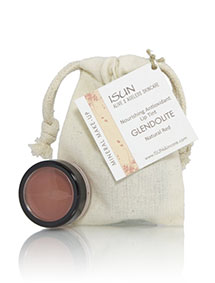
There are strict law prohibiting the use of lead in house paint and the federal government requires home sellers and landlords to provide information to buyers and tenants regarding their knowledge of lead paint in residences built prior to 1978.
People can get lead in their body if they: put their hands or other objects covered with lead dust in their mouths, eat paint chips or soil that contain lead, or breathe in lead dust (especially during renovations that disturb painted surfaces).
Lead is even more dangerous to children than adults because children’s growing bodies absorb more lead and their brains and nervous systems are more sensitive to the damaging effects of lead. If not detected early, children with high levels of lead in their bodies can suffer from: damage to the brain and nervous system, behavior and learning problems (such as hyperactivity), slowed growth, hearing problems and headaches. Lead is also harmful to adults. Adults can suffer from difficulties during pregnancy and other reproductive problems (in both men and women). Other effects are high blood pressure, digestive problems, nerve disorders, memory and concentration problems, and muscle and joint pain. Lead can affect the body in many ways.
~ Consumer Product Safety Commission
This is why it is so bizarre and befuddling that lead is found in many commercial lipsticks! Anything that we use on our lips enters our mouth and then the inside of our body in small amounts all day long. We also might kiss others, including children, and they in turn will have the ingredients of your lipstick entering their bodies, through oral ingestion and skin absorption.
The Campaign for Safe Cosmetics, www.safecosmetics.org, has done a great service in researching the issue and in working towards making a change. Here they answer pressing questions about this significant health concern:
From: A Poison Kiss: The Problem of Lead in Lipstick The Campaign for Safe Cosmetics October 2007 www.safecosmetics.org
Q: Does lipstick really contain lead?
A: According to independent lab tests initiated by the Campaign for Safe Cosmetics, some lipsticks available for sale in 2007 contained lead. The report, “A Poison Kiss,” names the brands tested and the levels of lead found in them (see page 10 of the report). More than half of 33 top-brand lipsticks tested (61%) contained detectable levels of lead, with levels ranging from 0.03 to 0.65 parts per million (ppm). One-third of the lipsticks exceeded the 0.1 ppm FDA lead limit for candy – a standard established to protect children from directly ingesting lead. Among the brands tested found to have the highest lead levels were L’Oreal, Cover Girl and Christian Dior – showing that the more expensive brands are no safer than drugstore brands.
The U.S. Food and Drug Administration followed up on our report with its own tests of lead in lipstick, released in 2009 (see next question for more details).
Q: What did the 2009 FDA study of lead in lipstick find?
A: FDA used a new analytical method to look for lead in lipstick, and found that the lead levels in lipstick are much higher than previously reported. FDA found that three manufacturers had much higher lead levels in their lipsticks than other manufacturers, but FDA did not name those brands.
In a study of 20 samples of red lipstick, FDA found lead levels ranging from 0.09 to 3.06 parts per million. The highest lead level found by FDA was more than four times higher than the highest lead level found by Campaign for Safe Cosmetics in the 2007 study (0.65 ppm).
FDA’s study found an average level of lead in lipsticks of 1.07 ppm – more than 10 times higher than the FDA’s limit for lead in candy of 0.1 ppm, a limit set by FDA to protect children from lead exposure. The candy limit is based on the reasoning that 0.1 ppm is the lowest lead level that can be achieved in candy. Using the same logic, FDA should immediately set standards to require manufacturers to minimize lead in lipstick to the lowest possible levels.
Q: Which lipsticks contain the most lead?
A: We don’t know. FDA noted that three manufacturers had the highest lead levels in their study, but they did not name the brands. Lipstick by “Manufacturer A” in the FDA study contained 11 times more lead than the average lead found in the 10 lowest samples.
In the 2007 study, the Campaign for Safe Cosmetics also found that a few brands had consistently higher lead levels compared to other companies. The worst offender in the CSC study was L’Oreal, which made three of the top five highest lead-containing brands. Cover Girl and Maybelline NY (made by L’Oreal) also had higher lead levels.
Q: The FDA Web site states that the lead found in lipstick samples by the agency is not a safety concern. What is this assessment based on?
A: FDA said it has assessed potential harm to consumers from use of lipstick containing lead at the levels found in its testing. However, the new FDA study does not consider or address the safety of lead in lipstick – it is only about detection of lead levels. FDA does not provide any studies or method of review to explain its conclusion about safety. The agency says only that, “[l]ipstick, as a product intended for topical use, is only ingested incidentally and in very small quantities.” However, we know of no studies that investigate how much lipstick is absorbed into the body. Such studies are not required of industry, and have not been conducted by FDA.
FDA also notes that the lead levels it found are lower than limits recommended by other public health authorities for lead in cosmetics. The agency mentions a draft recommendation in Canada, and a ruling from California’s Proposition 65 law, which does not consider science on neurotoxicity in its assessments. FDA does not mention that lead is banned from cosmetics sold in the European Union.
There are additional problems with the FDA Web site Q&A on lead in lipstick: FDA incorrectly states the average amount of lead found in lipstick in its tests (the average value was 1.07 not .97), and incorrectly states the number of products tested by the Campaign for Safe Cosmetics (we tested 33 products, not 25).
Q: Are the FDA findings consistent with the Campaign for Safe Cosmetics’ 2007 study of lead in lipstick?
A: Yes, although the levels of lead found by FDA are much higher than the levels found by the CSC. CSC found lead levels (in 33 samples) ranging from zero to 0.65 parts per million. FDA found lead levels (in 20 samples) ranging from 0.09 to 3.06 ppm. All lipstick samples in both studies were red.
The FDA used a new analytical method to look for lead in lipstick, and determined that earlier methods, including the method used by the Campaign for Safe Cosmetics, may have underestimated the amount of lead in lipstick.
FDA noted that three manufacturers had the highest lead levels in their lipstick, although they would not name those brands. In the CSC tests, L’Oreal, Maybelline and Cover Girl lipsticks consistently had the highest amounts of lead, compared to other manufacturers.
Q: How can I find the FDA study?
A: After two years of correspondence between FDA and the Campaign for Safe Cosmetics, the FDA study was finally released in the July/August issue of the Journal of Cosmetic Science, and made available at a cost of $35. The study must be purchased from the journal’s Web site.
The FDA did not publish the full data set, including the names of brands tested matched with the levels of lead found in those products. The public deserves to know which lipsticks contain the most lead. FDA used taxpayer money to conduct this study and the results should be fully and readily available to the public.
Q: What are the health concerns of lead in lipstick? Is just a little bit of lead really harmful?
A: Health experts argue that there is no safe level of lead exposure for children or pregnant women.
“Since recent science suggests that there is truly no safe lead exposure for children and pregnant women, it is disturbing that manufacturers are allowed to continue to sell lead-containing lipsticks,” according to Dr. Sean Palfrey, a professor of pediatrics and public health at Boston University and the medical director of Boston’s Lead Poisoning Prevention Program. “Lead is a proven neurotoxin that can cause learning, language and behavioral problems such as lowered IQ, reduced school performance and increased aggression. Pregnant women and young children are particularly vulnerable to lead exposure, because lead easily crosses the placenta and enters the fetal brain where it can interfere with normal development.”
In a review of recent science published in the April 2008 Current Opinion in Pediatrics, David C. Bellinger, Ph.D., of Harvard Medical School concluded: “No level of lead exposure appears to be ‘safe’ and even the current ‘low’ levels of exposure in children are associated with neurodevelopmental deficits.”
The U.S. Centers for Disease Control and Prevention states: “No safe blood lead level has been identified.” The agency suggests avoiding all sources of lead exposure.
Q: If lead is dangerous primarily for children, why do we have to worry if it’s in products marketed to women?
A: In order to protect children from unnecessary lead exposures, it is necessary to protect pregnant women, and all women of childbearing age. Teenagers and young girls using lipstick are exposing themselves to lead, which builds up in the body and stays in their bodies for years.
“Lead builds up in the body over time and lead-containing lipstick applied several times a day, every day, can add up to significant exposure levels. The latest studies show there is no safe level of lead exposure,” according to Mark Mitchell, M.D., MPH, president of the Connecticut Coalition for Environmental Justice.
Lead is also linked to infertility and miscarriage.
Q: Why does lipstick contain lead?
A: Lead is a considered to be a contaminant in lipstick, and therefore it is not listed on labels. Lipstick can become contaminated with lead in two ways: raw materials used in the lipstick may be contaminated with lead, or the pigments (paints) used in the lipstick contain lead.
FDA noted that the lipsticks containing the most lead came from three manufacturers. The CSC study also found that a few manufacturers consistently had the highest lead levels. This indicates that some companies are using better manufacturing practices than others.
Q: What can people do to avoid lead in lipstick?
A: Unfortunately, there is no way to know how much lead is in your favorite lipstick. We must call on FDA to immediately set standards to require manufacturers to reduce lead to the lowest achievable levels, and call on FDA to make public the full results of its study, including the brands tested and how much lead they contained.
Q: Are there government standards regulating lead in lipstick?
A: There are no standards in the United States limiting lead in lipstick. It is legal for lipsticks sold in the U.S. to contain any amount of lead, without any notice to consumers.
Lead is banned from all cosmetics sold in the European Union.
Lead is listed under California’s Proposition 65 list of chemicals known to cause cancer or birth defects, meaning that manufacturers of products containing certain levels of lead must notify consumers of risk. The state has said 5 ppm is the actionable lead level in lipstick. However, the Prop 65 calculations do not include the latest science on neurotoxicity, which shows that lead can cause brain damage in children and fetuses at extremely low levels.
Canada has a draft recommendation to allow up to 10 ppm lead in lipstick. This level, which is only a draft and has not been finalized, is much too high. Obviously, manufacturers can do much better than that, and government standards should require manufacturers to make lipstick with the lowest achievable levels of lead.
Q: Do other makeup products contain lead (e.g. foundation or eye shadow)?
A: Possibly. Lead could be a contaminant (and therefore not appear on ingredient labels) or an ingredient in other cosmetics products, like hair dyes (where it shows up as lead acetate), but since it is not illegal to use lead in cosmetics in the U.S. and since no government body requires pre-market testing for cosmetics products it’s tough to say. We do know that there are plenty of ingredients linked to cancer, birth defects, reproductive problems, obesity and other serious health problems in cosmetics.
The Good News
You can have beautifully colored luscious lips without worrying about affecting your health! At Living Earth Beauty, we disclose ALL ingredients. Why? Because we are proud of them. Our only purpose is to nourish and heal. We carry lip color that is pure, natural, and never ever has or will contain anything that could harm you or your loved ones. Check out our moisture lip colors here. You can also mix the any of the mineral makeup blush or eyeshadow colors with the uncolored lip balms to custom create any lip color you desire.
If you would like to have more lip color options and types available, we have several more we could add to our store – let us know in the comments below or send us an email.




